In the previous entry I showed several photos looking toward the
Imperial National Wildlife Refuge from a bluff high above the Colorado River
on Ferguson Road. That vantage point is in California.
The refuge itself is on the Arizona side of the river. The only land route to reach it
runs off US 95 north of Yuma, then west through scenic rolling Sonoran Desert terrain
along Martinez Lake Road and Red Cloud Mine Road. Several miles travel
through Yuma Proving Ground lands, where we've seen troops doing
parachute jumps as they train for missions in the Middle East and elsewhere.
This is a view toward the refuge and "painted desert" from the
overlook on Ferguson Road:
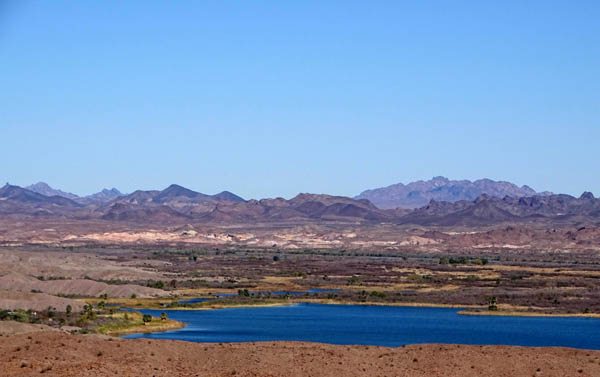
When Jim and I wintered at the Imperial Dam Long Term Visitor Area (LTVA)
in January and February of 2011 we made one trip to this wildlife refuge.
We went to the visitor center, drove back to of the overlooks above
the river, and hiked the colorful Painted Desert Trail loop with Cody.
This winter I made three more trips to the wildlife refuge, which is
about a 20-mile drive from the RV park at YPG.
In late
December Jim, Cody, Casey, and I hiked the Painted Desert
Trail again. While we were in the visitor center, Jim saw a notice about
free photography classes to be held at the refuge in January and
February. I signed up for the mid-January class.
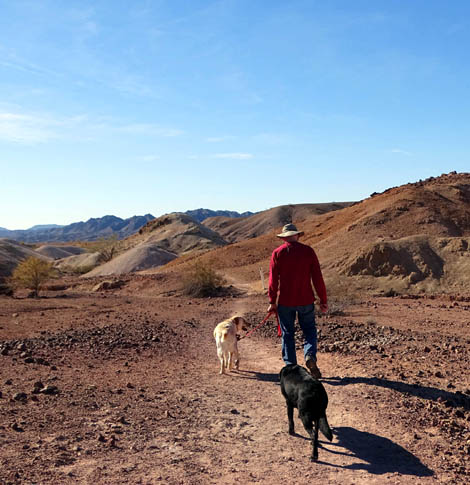
Casey and Cody follow Jim along
the Painted Desert Trail in December.
One of our neighbors in the RV park was also interested in the
January photo class. She registered, too, and we drove to the refuge together that day.
She and I returned in mid-February with Casey and Kara, her Rhodesian
ridgeback, to hike on the Painted Desert Trail and check out the views on
several of the overlooks farther back the sandy road through the refuge. She had
a 4WD vehicle that allowed us to explore the more narrow, hilly road several
miles past the trailhead parking area.
Most of the photos in this entry are from my January and February trips to the refuge
this winter, as well as a few pictures I took in December but didn't
include in the earlier entry about the refuge.
ABOUT THE REFUGE
Imperial is one of three national wildlife refuges a little north of Yuma, AZ. All
three are shown on the map below, with Yuma marked in yellow in the lower left
corner and the approximate location of our RV park at Yuma Proving Ground with a red dot.
The blue line emphasizes the Colorado River, which also serves in this
area as the boundary between Arizona and California.
The smallest of the three refuges, Cibola NWR, has 18,300 acres of riparian habitat
along the Colorado River. It's the small green area I marked as #1 on the map.
Although part of this refuge is on the Arizona side of the river, road access is
from Blythe on the California side. It's a considerably longer drive from YPG (or Yuma)
than the other two wildlife refuges so we haven't visited Cibola.
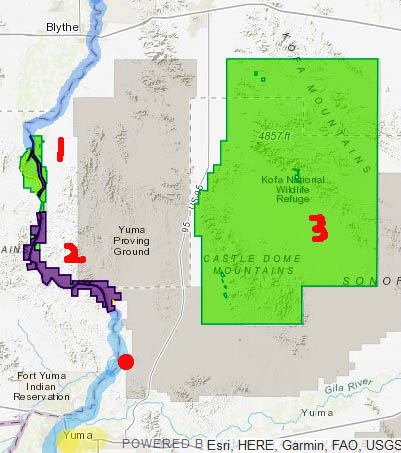
The largest of these three national wildlife refuges in southwestern Arizona is Kofa,
the big green rectangle marked #3 on the map above. It has 665,400 acres of desert and
mountain terrain. The main entrance is about 40 miles north of Yuma, just off US 95.
All of Kofa NWR is in Arizona.
Most of the Castle Dome Mountain Range lies within Kofa NWR. In previous
entries I've shown several photos,
like the one below, from hikes and bike rides near our campground that show these iconic
dome-shaped mountains in the background.
I'll have more photos of Kofa NWR in the next entry.
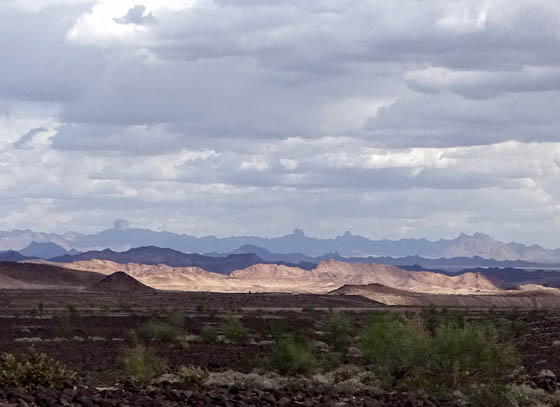
Layers of mountains and hills are visible from BLM lands outside
the Imperial Dam LTVA;
the Castle Dome Mountains are in the distance.
Although Imperial National Wildlife
Refuge is small (25,768 acres) in comparison to the Kofa refuge, it has a very nice
visitor center, more developed roadways, and a larger variety of terrain
and wildlife than Kofa. It's the purple area I marked #2 on the map above.
Imperial NWR straddles the Colorado River, with road access and most of its
protected wilderness on the Arizona side. Its habitat is classified as "desert
upland" and "river shoreline."
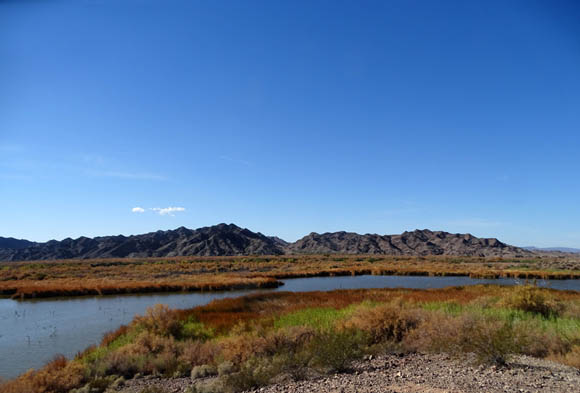
A view from Imperial NWR looking west
across the river to the low mountain range in California
The Imperial NWR was established to protect thirty miles of wetland and desert
habitat along the Lower Colorado River after the Imperial Dam was built downstream in 1938.
Backwater stored in marshes, ponds, and lakes in the refuge provides excellent nesting,
feeding, and resting habitat for a variety of birds and other species
that live here year-round or migrate to this area in the winter.
The river and its backwaters are a literal "green oasis" in the desert, as you
can see from this photo looking down on the water from high on Ferguson Road:
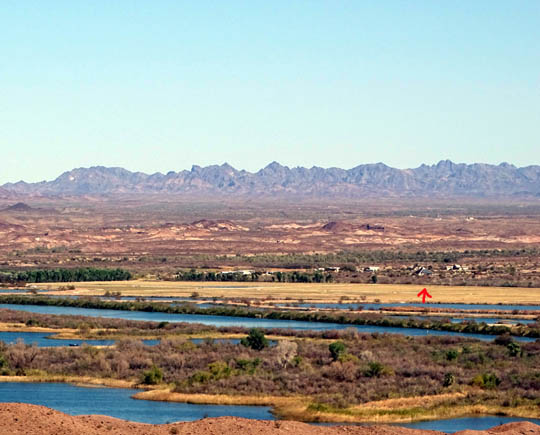
It's probably even more green in the spring and summer; I
took that photo near the end of February. The arrow points to the Imperial NWR visitor center.
Imperial NWR is an excellent birding area, especially in the winter months when migratory
species are present. Close to 300 species of birds have been spotted in the refuge.
The refuge is also home to a wide variety of mammals, rodents, and reptiles, including
bighorn sheep, mule deer, bobcats, mountain lions, coyotes, kit fox, jackrabbits, muskrats,
raccoons, and lizards.
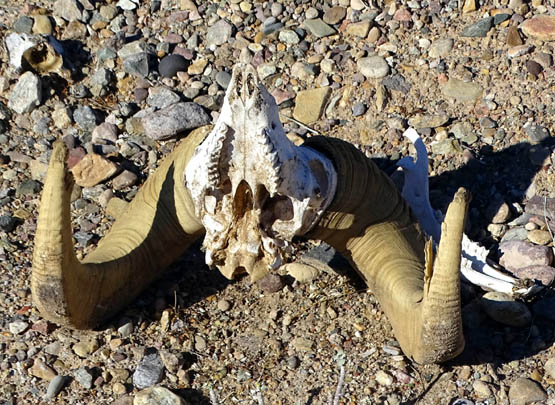
Bighorn sheep skull and horns on display
outside the visitor center
Activities at the refuge include browsing the exhibits inside and outside the
visitor center, taking in the views from four overlooks and the observation tower, watching wildlife,
taking photos, picnicking, hiking, cycling, fishing, hunting, and boating.
When Jim and I went into the visitor center in January, 2011 and December, 2015 there
were lots of stuffed birds, rodents, reptiles, and mammals on display in plexiglass cases.
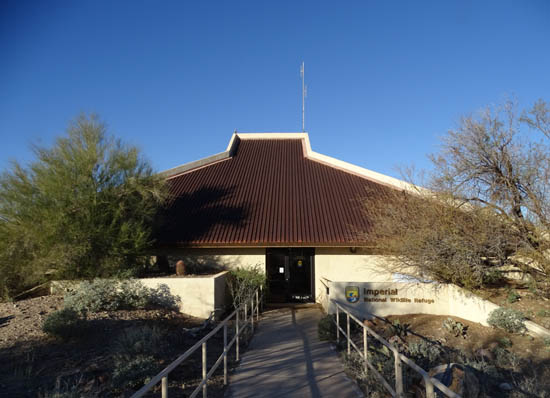
Imperial NWR visitor center
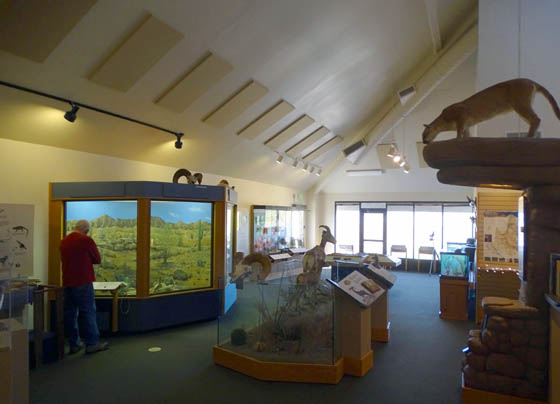
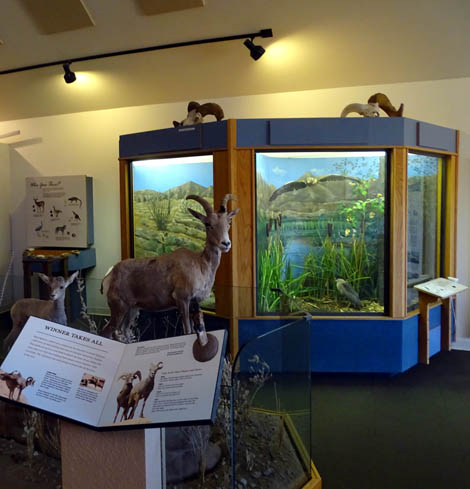
More animals displayed in December
I was surprised when I went back for the photography class in
January to see all the cases empty!
Turns out, the critters on display had been victims of a moth infestation. They were
removed and placed in freezers to kill the moths. The animals were back
in their cases when I
returned in February.
Because most of the Imperial NWR is wilderness, vehicles and bicycles are permitted on
designated roads only. Foot and horse travel is permitted in the backcountry and on trails.
No camping is allowed anywhere on the refuge but there are tent and RV
camping options available in and near the town of Martinez Lake.
Pets must be either on a leash or under voice control in the refuge.
There is very little shade on the trails or at the overlooks so be sure
to have adequate fluids for all the people and pups in your group.
PAINTED DESERT TRAIL
The only marked and maintained trail in the refuge is the Painted Desert Trail, a 1.3-mile
loop through colorful rock formations and hills above the river. The
colors aren't as spectacular or widespread as they are in some other
areas of the Southwest but they are better than anywhere else we've seen
in this part of Arizona.
The trailhead is located several miles past the visitor center on Red Cloud Mine Road. The
dirt road to the parking area is rather smooth and suitable for any passenger vehicle:
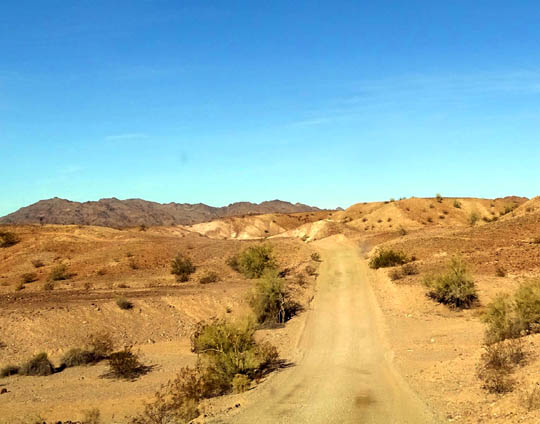
The Painted Desert Trail is easy to follow either clockwise or counter-clockwise. It is fairly
smooth but does include some steps and a few rather steep, short hills. Although it's not
handicap-accessible, it's suitable for kids and older folks if they are in relatively good shape.
I've hiked this trail three times now in winter months and have seen only a few other people
on the loop each time. There is ample parking, information about the trail, and a restroom at
the trailhead.
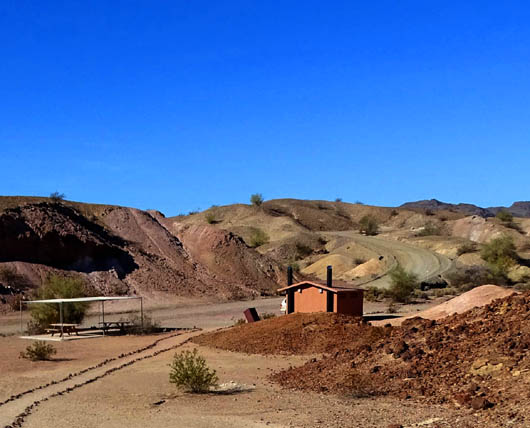
Trailhead parking area
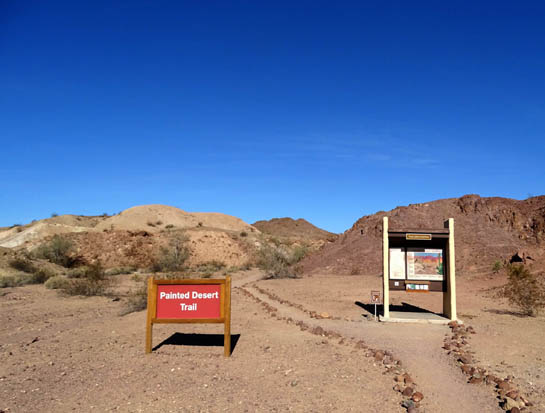
Trailhead going clockwise on the loop
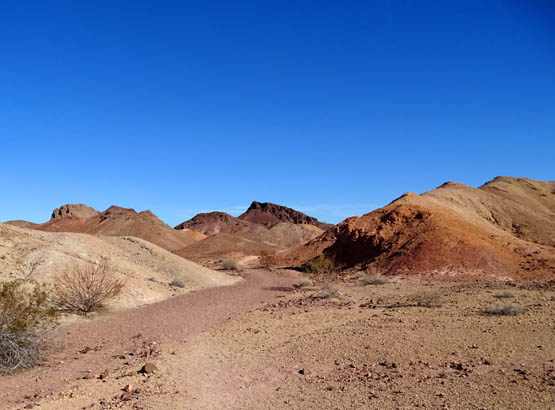
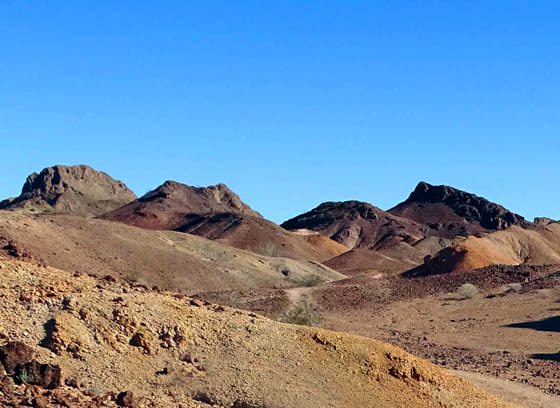
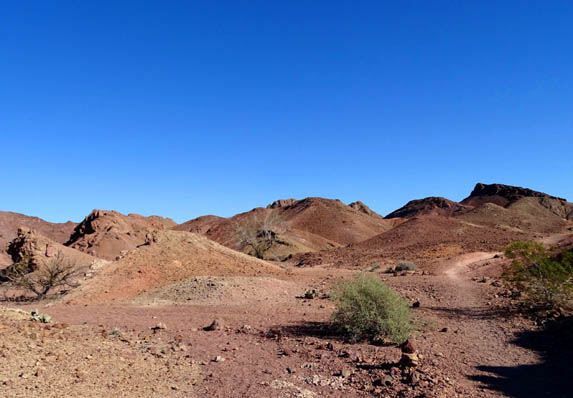
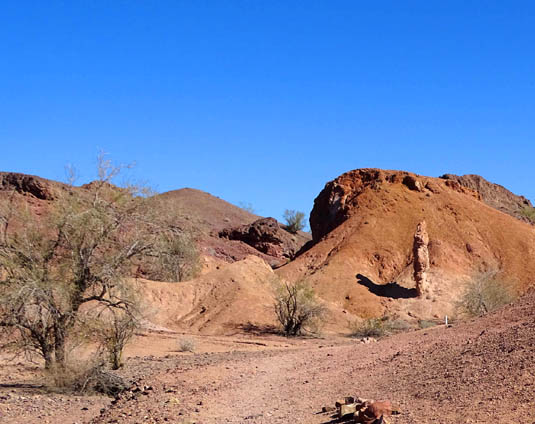
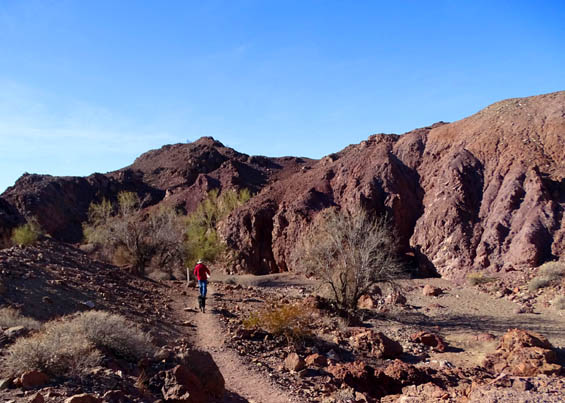
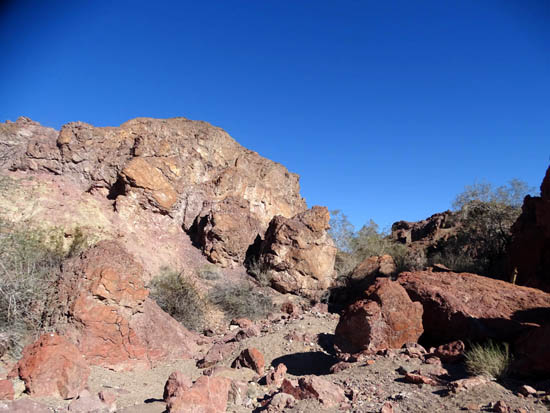
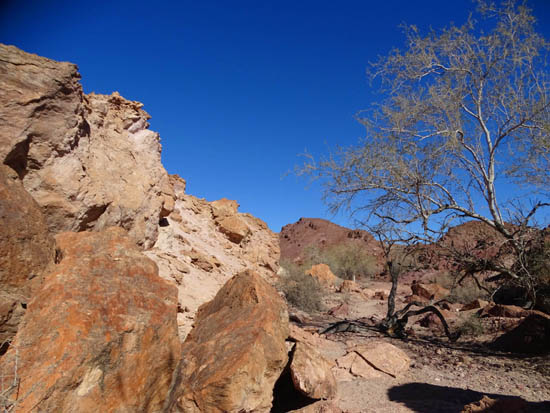
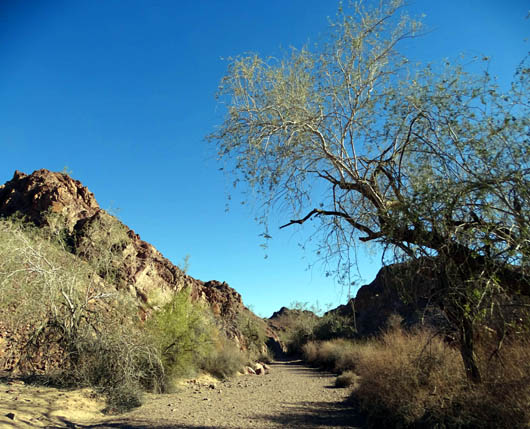
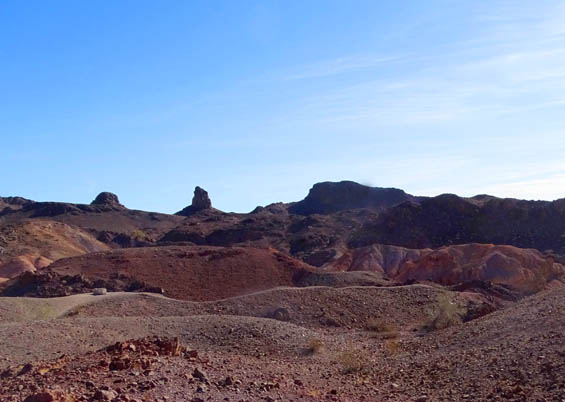
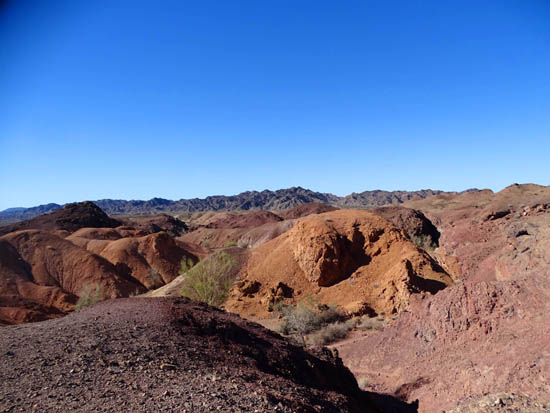
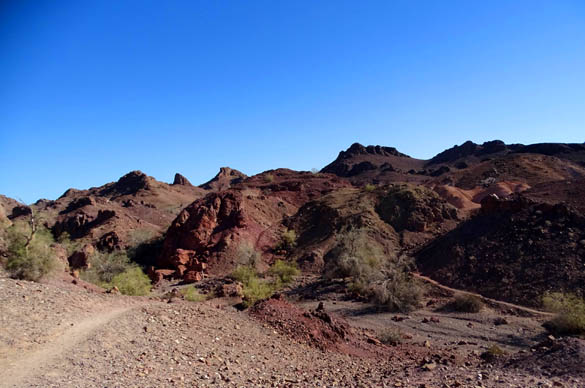
OVERLOOKS
In addition to Meers Point, which is between Martinez Lake and the visitor center
in the refuge, there are four other observation points on Red Cloud Mine Road.
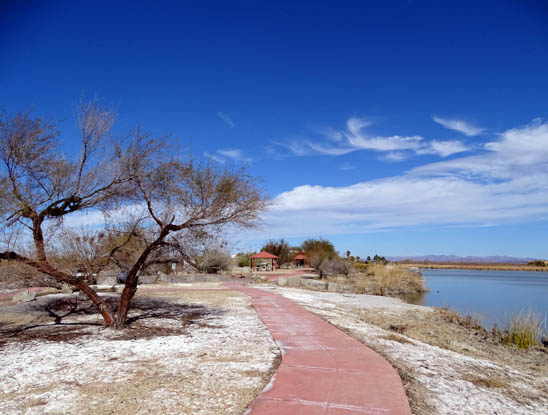
Picnic area at Meers Point; that's white
sand, not snow!
Little roads to the Palo Verde and Mesquite overlooks are
located between the visitor center and Painted Desert Trail.
The Ironwood and Smoke Tree observation points are beyond the trail. Because Red
Cloud Mine Road becomes more narrow, hilly, and rough past the Painted Desert Trail,
a 4WD vehicle is recommended for access to those two overlooks.
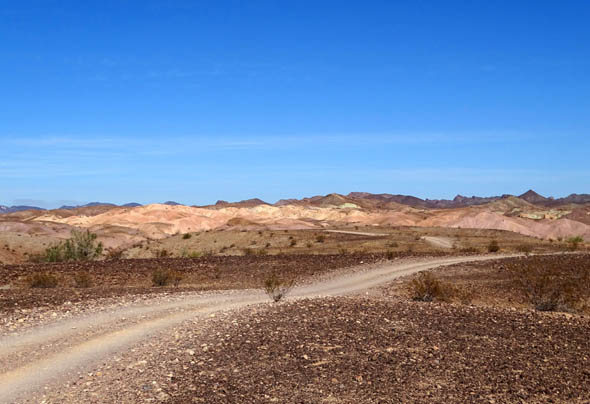
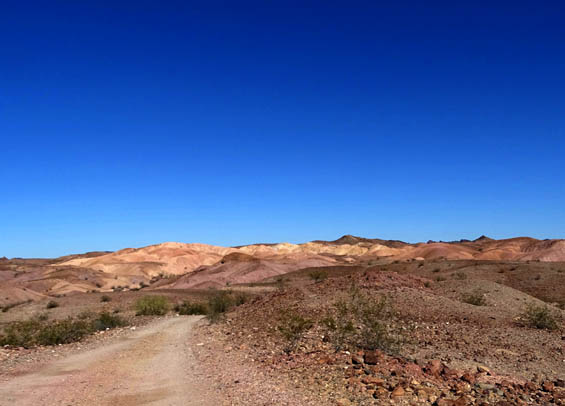
I've been to all four overlooks, which have panoramic views of
the verdant valley and mountains on both sides of the river:
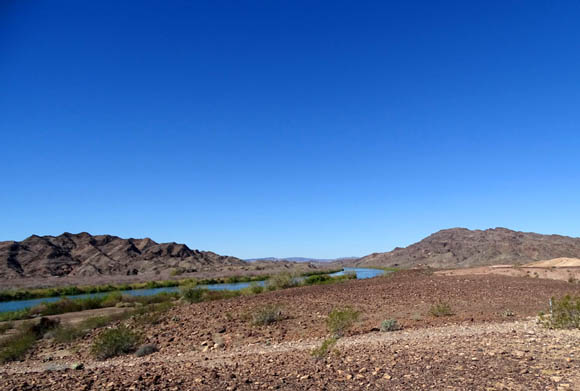
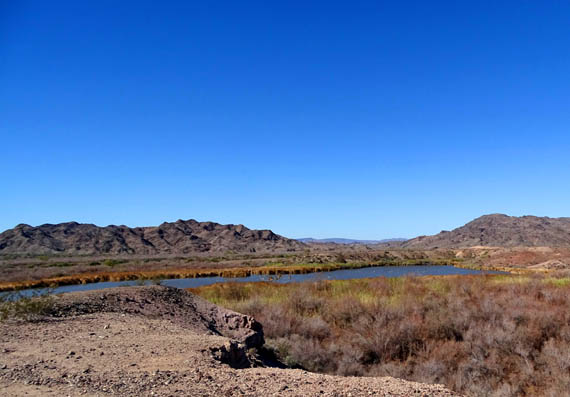
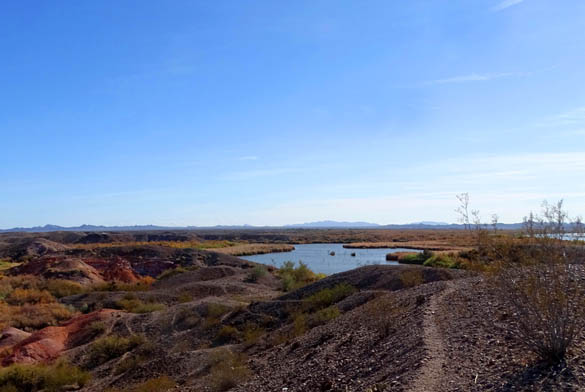
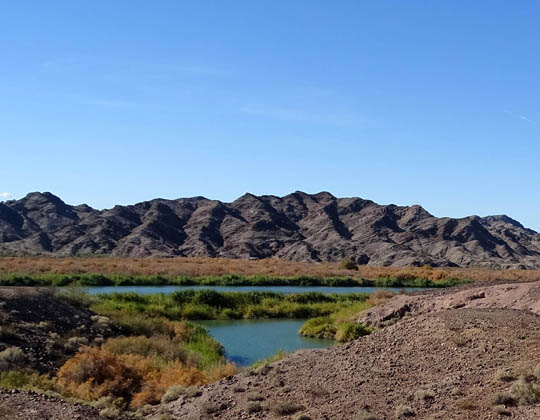
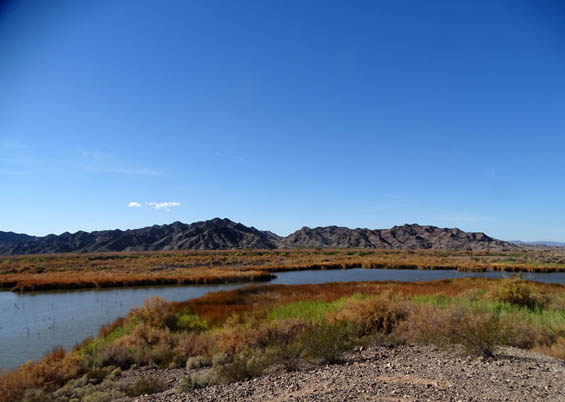
There is no fee to visit the Imperial National Wildlife Refuge. It's a peaceful
oasis in the desert and worth your while to spend some time here if you're in the
area and any of the activities listed above are of interest to you.
Next entry: photos from the more harsh environs at
the Kofa National Wildlife Refuge
Happy trails,
Sue
"Runtrails & Company" - Sue Norwood, Jim O'Neil,
Cody the ultra Lab, and Casey-pup
Previous
Next
© 2016 Sue Norwood and Jim O'Neil
































